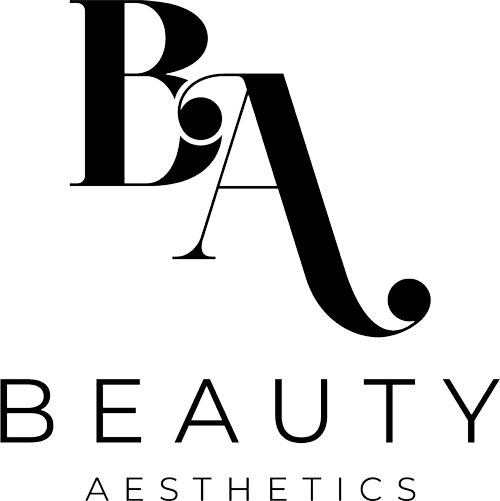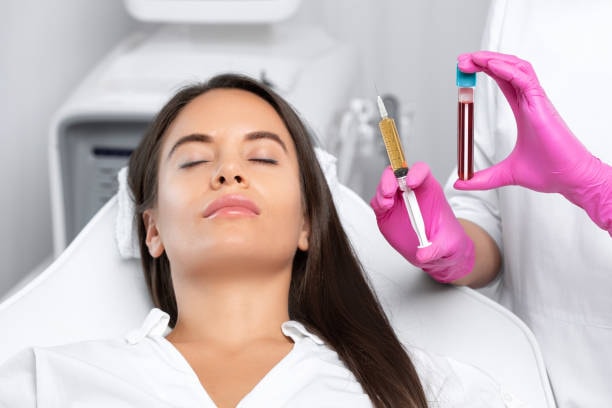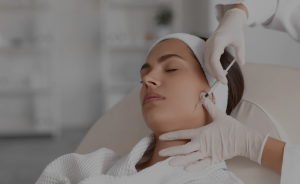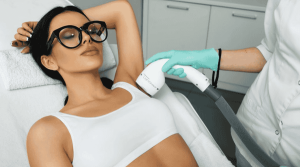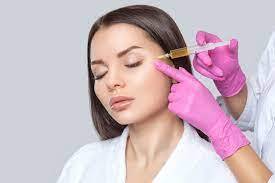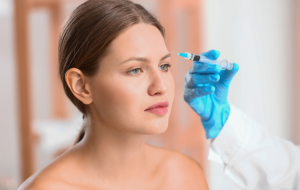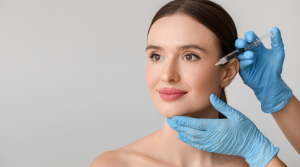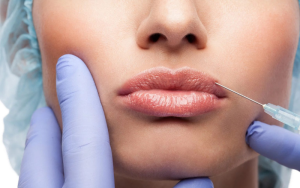Platelet-rich plasma therapy is quickly becoming a go-to treatment for individuals looking to rejuvenate their skin in a natural, minimally invasive way. By harnessing the blood-derived power of platelet cells and their healing properties, this innovative procedure offers exciting possibilities for those seeking healthier, more radiant skin. Whether you are worried about facial wrinkles, dullness, or want to boost overall tone and texture, PRP can make a noticeable difference. In this blog, we will explore how PRP works, discuss its many benefits, and explain why it is such a promising option for skin revitalization.
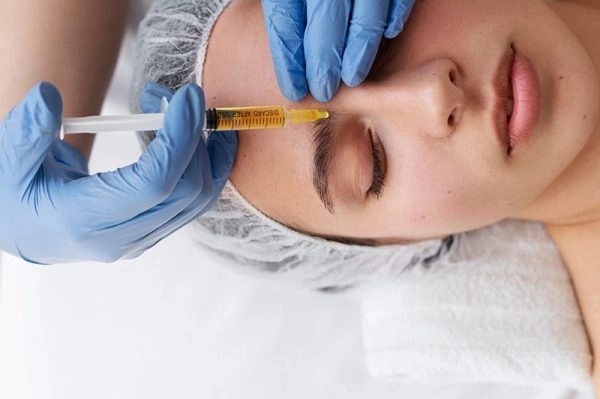
What is PRP Therapy?
Platelet-rich plasma (PRP) therapy is a treatment option that uses components from your own blood to stimulate the body’s natural healing process. Specifically, PRP contains a high concentration of platelets, white blood cells, and various blood components—all crucial elements that accelerate tissue repair and cell regeneration. During PRP sessions, a small blood sample is drawn and spun in a centrifuge to separate platelet-rich plasma from other blood products, such as red blood cells. The result is plasma rich in growth factors, which can be injected into targeted areas to promote healing and rejuvenation.
Though PRP originated as a method to treat injury in orthopedics—particularly for knee sprains or tennis elbow—it has evolved to address conditions related to beauty and skincare. Today, PRP injections are used to enhance collagen synthesis, wound healing, and overall skin vitality. These cosmetic procedures are popular for their ability to yield natural, long-lasting effects by leveraging the body’s innate capacity for repair.
The Science Behind PRP
The Role of Platelets in Healing
Platelets in your blood are integral to the healing process. When an injury occurs, platelets help form a blood clot, slowing bleeding. Beyond clotting, they release various signaling molecules that recruit other cells—like white blood cells and smooth muscle cells—to the site of damaged tissue. This orchestrated response fosters connective tissue healing, making platelets key drivers of soft tissue healing and repair.
When extracted and concentrated into platelet-rich plasma, these cells take on a more targeted function. By injecting concentrated platelets into areas of concern—such as wrinkles, scars, or areas of hair loss—you effectively supercharge the body’s natural healing process. The role of platelet becomes even more powerful when isolated in a concentrated form.
Growth Factors and Their Functions
Platelet-rich plasma is teeming with growth factors, which are specialized proteins that orchestrate cell growth, tissue repair, and blood vessel formation. These molecules include insulin-like growth factors, endothelial growth factors, and epidermal growth factor, all of which are essential for encouraging cellular rejuvenation and functional improvement. When these concentration of growth factors are delivered via injections of platelet into the skin, they help reduce inflammation, bolster collagen synthesis, and enhance overall tissue elasticity.
Clinical studies and clinical trials have demonstrated how these growth factors can amplify the regeneration of hair follicles—promoting hair growth—and improve skin texture. As evidence accumulates, the efficacy of platelet therapies in both orthopedic and cosmetic fields continues to gain traction in clinical practice.
Benefits of PRP Therapy for Skin
Improved Collagen Production
One of the standout features of PRP is its ability to boost collagen levels. Collagen acts as the framework that keeps your skin tight, supple, and youthful. Since platelet growth factors stimulate fibroblasts—the cells responsible for collagen production—patients often see an improvement in symptoms like fine lines and wrinkles. Platelet-rich plasma therapy thus supports a more elastic skin structure, leading to a noticeable difference in the complexion.
Enhanced Tissue Healing
Healthy skin relies on rapid and efficient tissue repair. PRP accelerates this healing process by bringing a high concentration of platelets and growth factors to the treatment site. This triggers quicker cell turnover and more effective recovery from micro-injuries within the skin, improving skin tone and texture.
Reduced Inflammation
Inflammation is a common culprit in many skin conditions, including acne scars and chronic redness. PRP’s application of platelet can help curb inflammatory responses, as platelets secrete molecules that mediate swelling and promote soft tissue healing. Patients often observe less redness and more consistent skin color after a PRP session.
Youthful and Revitalized Appearance
By promoting collagen production, cell regeneration, and improved blood flow, PRP delivers a fresh glow to the skin. It reduces sagging, stimulates hair growth in areas of thinning, and diminishes the look of scarring and sun damage. Over time, this leads to a long-lasting, more youthful complexion.
The PRP Therapy Procedure
Preparation Process
- Initial Consultation: A healthcare professional assesses your medical history, current conditions, and specific skin goals, determining if PRP is the right approach.
- Blood Draw: A small amount of autologous blood—meaning your own blood sample—is collected.
- Centrifugation: The sample is spun to separate the platelet-rich fibrin or platelet-rich plasma from red blood cells and other blood components. The result is autologous platelet-rich plasma, containing a high concentration of platelets and growth factors.
Injection Technique
The injection process involves using fine needles to place PRP into targeted areas. In facial PRP, the focus is often around the eyes, cheeks, or mouth. This injection therapy introduces concentrated platelets directly where tissue repair and regeneration are needed most. Because the PRP is derived from your own body, the likelihood of adverse events such as allergic reactions is minimal.
Immediate Post-Injection Care
Following the injections, mild swelling or redness can occur. Most practitioners recommend skipping strenuous activities and blood thinners for a short period to reduce the chance of bruising. Light icing can help alleviate discomfort, and gentle skincare routines ensure the PRP remains effective. Typically, minimal downtime is needed, and any common side effects generally resolve within a day or two.
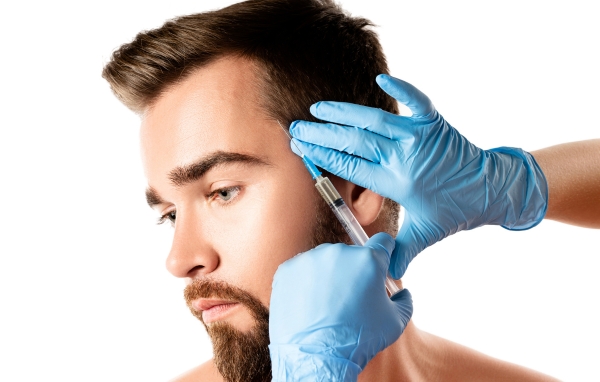
Who are the Ideal Candidates for PRP Therapy?
Age Considerations
PRP can benefit individuals across a broad range of ages. Younger patients might seek it to combat the first signs of aging or mild acne scarring, while older patients may find PRP enhances more mature skin by increasing collagen density and improvement in elasticity. Overall, the success rate can be high for those looking to slow aging’s impact, making PRP an appealing treatment option in clinical applications.
Skin Types and Conditions
PRP is versatile and can be used on different skin types without causing discoloration. It is especially effective for concerns like wrinkles, mild sagging, and uneven texture. While it’s less common, individuals with certain medical issues—such as chronic condition or ongoing musculoskeletal conditions—should consult a healthcare provider to ensure that PRP aligns with their overall health plan.
Beyond Skin: The Broader Landscape of PRP
Though this blog focuses primarily on skin rejuvenation, PRP has a well-documented history in treating sports injuries, soft tissue injuries, musculoskeletal injuries, and even hair loss. From tennis elbow to nerve injury, from muscle injuries to joint injuries, the injections of platelet can target a variety of conditions to facilitate quicker repair and increased range of motion.
Multiple clinical studies and Animal studies have looked at the analgesic effects and functional outcome of PRP in cases of chronic tendon injuries, tendon injuries, and ligament injury. Researchers like Anitua E, Sánchez M, Maffulli N, Filardo G, Azofra J, Cheng J, Creighton A, Marcacci M., and Marwaha N have contributed to the growing body of current evidence and evidence level supporting PRP’s role in connective tissue healing.
Clinical Evidence and Real-World Applications
- Patellar Tendon and Knee Sprains: PRP has shown promise in accelerating healing rates for patellar tendinopathy and other knee sprains, especially among patients with knee osteoarthritis.
- Torn Tendon and Ligament Repair: Whether it’s a cruciate ligament or a tendon ruptures, PRP can potentially speed up bone healing and reduce downtime. A double-blind randomized controlled trial demonstrated improvement in pain scores and functional improvement in a 2-year follow-up.
- Tennis Elbow and Elbow Tendinopathy: Studies in Shoulder Elbow and Sports Med journals highlight the efficacy of platelet therapy in alleviating pain linked to elbow tendinopathy.
- Shoulder Injuries: For partial tears or treatment of rotator cuff, PRP can complement arthroscopic repair and physical therapy, improving clinical outcomes.
- Hair Growth and Pattern Baldness: PRP is widely used to address pattern baldness. By injecting PRP directly into the scalp, it can stimulate dormant follicles and encourage thicker hair strands.
- Wound Healing in Soft Tissue: Cases like venous ulcers can benefit from the application of platelet growth factors, aiding faster closure and regeneration of damaged tissue.
Research and Studies
Ongoing pilot study and prospective cohort study data published in Curr Rev Musculoskelet Med provide insights into the clinical outcomes of PRP on Acute sports Injuries. While steroid injection or other therapies like hyaluronic acid injections remain viable, many Healthcare professionals see PRP as a superior or complementary treatment due to fewer adverse effects. Another advantage is its autologous nature, meaning fewer risks of adverse reaction since PRP is derived from the patient’s own blood plasma.
The mechanism by which PRP supports repair and functional outcome lies in mesenchymal stem cells activation, stem cells mobilization, and the regulated release of platelet concentrations. Whether dealing with musculoskeletal applications or hair growth, PRP’s healing process is bolstered by the synergy of platelet growth factors and supportive cellular components like endothelial growth factors and epidermal growth factor.
Insurance and Practical Considerations
Although PRP has significant backing from clinical studies and trials, not all insurance companies and insurance plans currently cover it. Costs can vary depending on the number of treatment vials needed, the area being treated, and the healthcare provider’s fees. However, many find that PRP offers a cost-effective alternative or supplement to more invasive surgical procedures, thanks to its minimal downtime and promising success rate in improvement in symptoms.
Potential Side Effects and Risks of PRP Therapy
Common Side Effects
Because PRP uses your own autologous blood, adverse effects are typically minimal. Mild swelling, redness, or bruising around the injection site may occur. These side effects usually subside within a few days. Patients might also experience slight discomfort or tenderness, which can be managed with over-the-counter pain relievers that don’t affect blood clot formation.
Rare Complications
Severe complications are uncommon but can include infection at the injection site or allergic reactions to any additives used during processing. In very rare cases, there might be an issue related to incorrect handling of the blood sample. Consulting a qualified healthcare professional reduces these risks significantly. Always disclose any use of blood thinners or other medications during your consultation.
Comparing PRP Therapy with Other Skin Treatments
PRP vs. Hyaluronic Acid Fillers
While hyaluronic acid injections offer instant volume and immediate results, PRP takes a more regenerative approach. Fillers plump the skin externally, whereas PRP improves skin health from within by fostering cell growth and connective tissue healing. PRP also involves minimal risk of allergic reaction since the platelet-rich plasma is derived from your own blood.
PRP vs. Chemical Peels
Chemical peels remove the top layers of skin to reveal fresher layers underneath, which can help diminish scars and pigmentation. However, PRP focuses on triggering the body’s own repair mechanisms. Both treatments can target fine lines and tone, but PRP is more holistic in its healing and tissue repair process. The synergy of PRP and chemical peels is also common in modern skincare routines for maximized outcome.
PRP Therapy vs. Laser Treatments
Laser therapies use focused light to address issues like pigmentation, vascular lesions, and surface scarring. While lasers can yield dramatic improvements, they may not be suitable for all skin types and can involve extended downtime. PRP, on the other hand, works with minimal downtime, promoting soft tissue healing beneath the skin’s surface. In some comprehensive cosmetic procedures, PRP is even combined with lasers to enhance wound healing and the final outcome.

Why Choose Beauty Aesthetics, Toronto for PRP Therapy?
At Beauty Aesthetics, Toronto, we pride ourselves on providing state-of-the-art procedures tailored to each individual’s needs. Our team of experienced professionals has extensive training in platelet-rich plasma therapy, ensuring a safe and effective treatment experience. We use top-quality treatment vials, a cutting-edge centrifugation process, and stringent safety protocols to maximize the potency of your platelet-rich plasma injections.
When you step into Beauty Aesthetics, Toronto, you’ll feel at ease in our welcoming environment. From the moment of consultation to the final result, every step is guided by a commitment to quality and personalized care. Our experts will help determine if PRP is the most suitable treatment option for your unique conditions and goals. We also provide guidance on combining PRP with other cosmetic procedures for enhanced clinical outcomes. At Beauty Aesthetics, Toronto, your journey toward radiant skin is in highly capable hands.
Conclusion
PRP therapy holds immense potential, both in aesthetic and orthopedic domains, by utilizing the regenerative power of platelet-rich plasma. Whether your goal is a more youthful complexion or hair growth, PRP’s growth factors accelerate the healing process and tissue repair in remarkable ways. From knee sprains and tennis elbow to facial rejuvenation, the breadth of clinical evidence keeps expanding. As research and clinical studies continue, PRP stands out as a natural healing process that can deliver lasting results. If you seek a holistic boost to your beauty journey, PRP therapy may be the answer.
